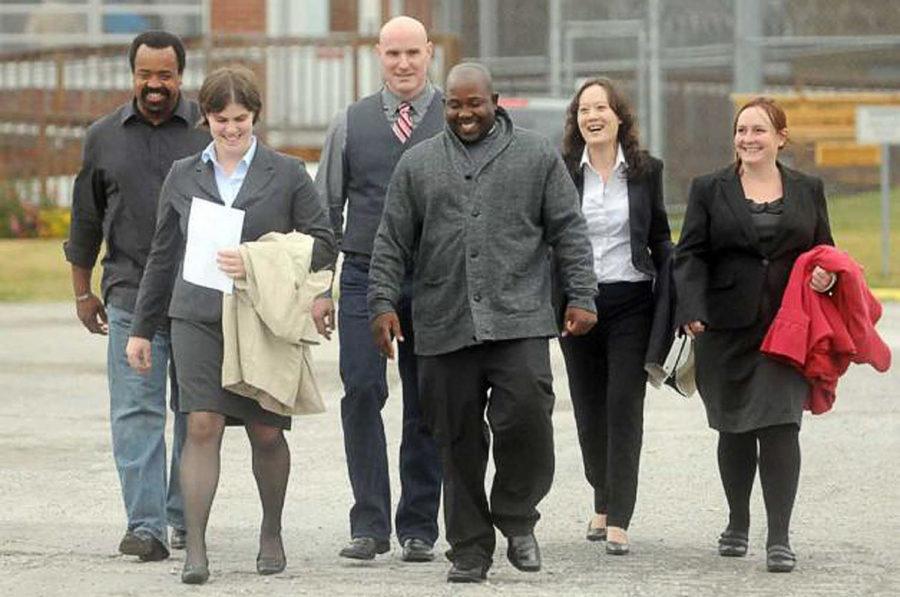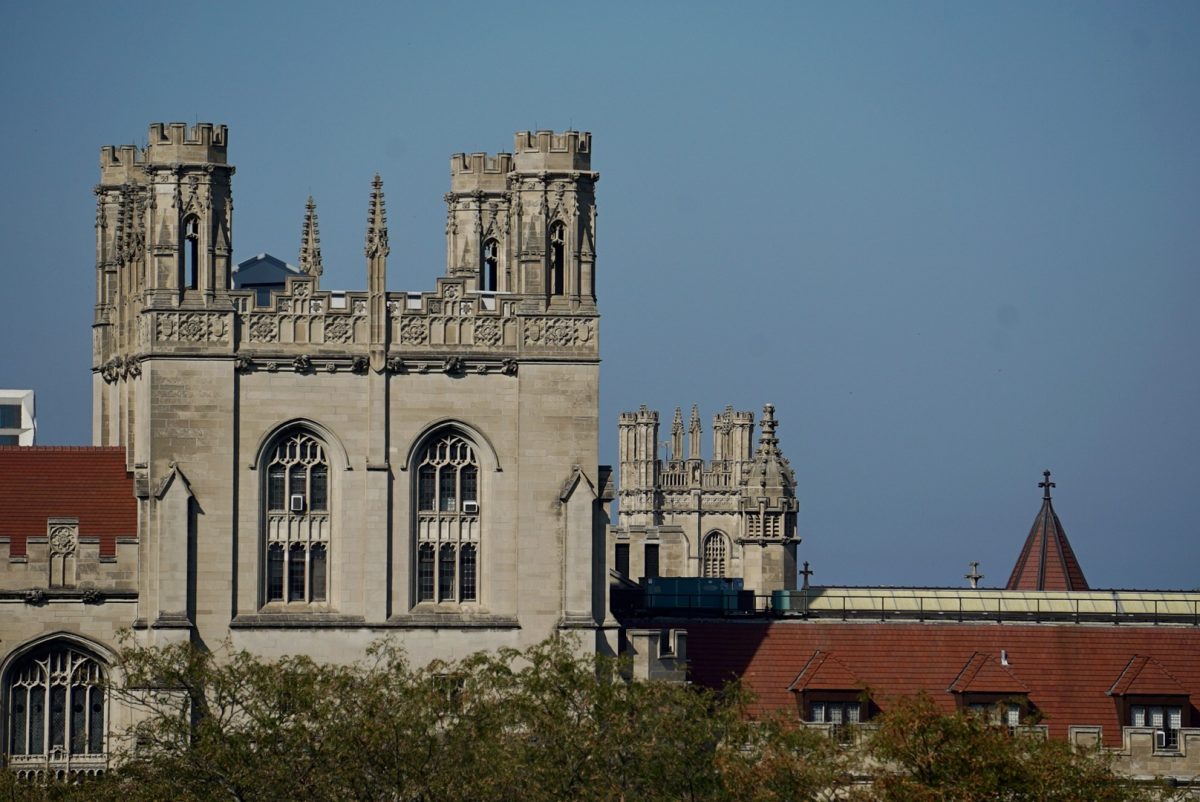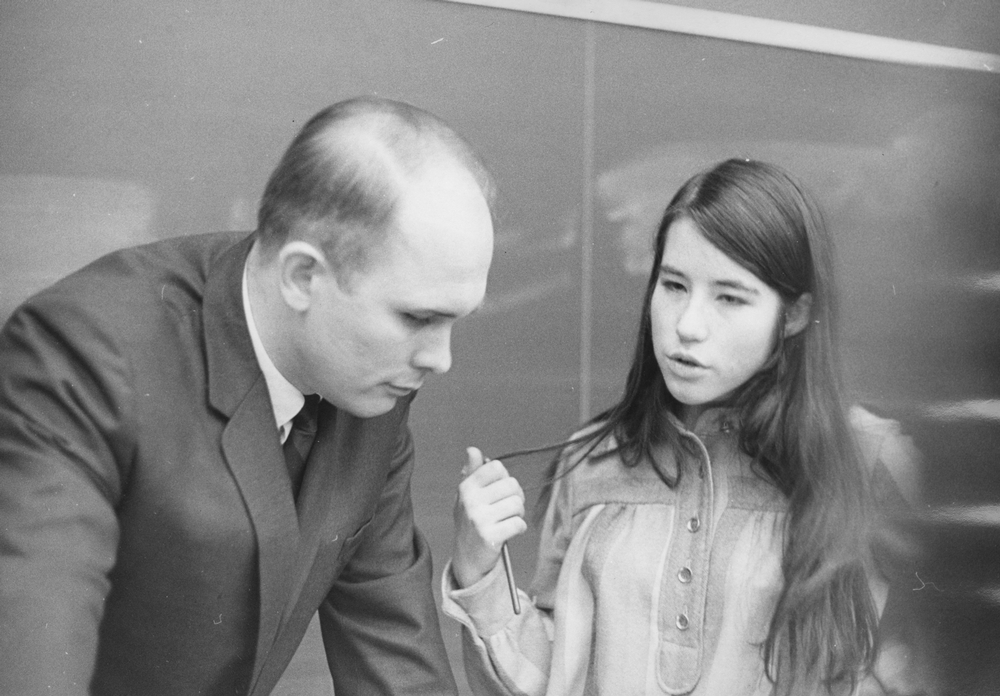In 1997, Thomas Sierra was convicted of a murder he had not committed. His conviction was based on two eyewitnesses who said they had been pressured into identifying Sierra as the perpetrator by a former Chicago police detective. Sierra remained in prison for 22 years before the University of Chicago Law School’s Exoneration Project won a legal battle to overturn the conviction in 2018.
Since its inception in 2007, the Exoneration Project, which operates as a free legal clinic at the Law School, has helped free nearly 200 clients who have been wrongfully convicted of crimes.
The project takes cases in which an incarcerated person has already been convicted of a crime, usually after appeals have failed.
The Maroon spoke with Exoneration Project staff attorneys and lecturers at the Law School Karl Leonard and Lauren Myerscough-Mueller about the organization’s work and the role it plays in the criminal justice system.
Leonard said that the legal system makes it extremely difficult to overturn criminal convictions after a jury’s guilty verdict.
“The criminal justice system is so stacked against defendants and people that have been accused of crimes,” Leonard said. “Once you are convicted, guilty or not, there’s a tendency to want to lock them up and throw away the key that’s built into the system. The amount of emphasis that the system puts on finality makes it where we’re really fighting against an immovable object.”
Some clients have been in prison for more than 30 years prior to the Exoneration Project taking on their case. Project staff determine whether they believe the incarcerated person is innocent and whether there is a viable path for overturning the conviction.
“We basically, in a lot of ways, redo the investigation that the police did or that the police should have done,” Leonard said. “We, at the beginning of the case, will try to get all the documents that we can: all the police reports, all the transcripts. Obviously, talk to our client about everything that he or she knows happened.”
After a jury conviction, the burden of proof shifts to the convicted defendant to prove their innocence. The defendant usually has to find new evidence that could not have been presented during their trial and prove that the new evidence would result in a different outcome.
The advent of DNA testing in the 1980s created a new way for many wrongful convictions to be overturned. With all of these convictions being overturned, Myerscough-Mueller said this pattern raised difficult questions of why so many innocent people had been convicted in the first place.
One of the most common issues identified in wrongful convictions is inaccurate eyewitness testimony.
“Memory doesn’t work like a video recorder,” Myerscough-Mueller said. “Basically, people are just really bad at being eyewitnesses, but you think you’re going to be really good at it. Especially if something horrifying happens to you.”
Another common cause of wrongful convictions is false confessions, often made under coercive conditions. Myerscough-Mueller said these cases are particularly common in Chicago, where some detectives have been trained in a culture that emphasizes closing cases over accuracy.
“What we’ve seen in Chicago is [that] it’s a lot of detectives who are coming up together, they’re trained together, and they’re in a place where they get accolades and promotions and everything for solving crimes,” Myerscough-Mueller said. “And so they kind of view it as ‘Well, it’s another gang member off the street’ and ‘I can close out this case because I have so many cases and I’m sure this person was going to do something bad or has done other bad things, so it doesn’t matter.’ And they don’t care that they didn’t get the right person.”
Other common causes of wrongful convictions include witnesses incentivized to lie, prosecutorial misconduct, ineffective lawyers, junk science, and racial biases. Most of the cases the Exoneration Project works on include more than one of these causes.
Leonard said the typical long period of time between when a crime was committed and when the Exoneration Project works to overturn the conviction makes it difficult to reinvestigate crimes and prove a wrongful conviction.
“[Witnesses] used to be on the same block on the South Side of Chicago, and now two of them are in Florida, and half of them are dead, and one of them is in California, so it’s just time-consuming and it can be a little bit expensive to try and get all of that done,” Leonard said. Leonard said the Exoneration Project clinic, having been established at the Law School, offers students a unique opportunity to experience practicing law while still a student. Roughly 10 students currently work on cases for the clinic.
Third-year law student Jacqueline Pecaro, who has worked at the Exoneration Project clinic since fall 2022, told The Maroon in an interview that students are involved in all aspects of cases.
“It’s an incredible opportunity for law students because you’re not only doing the legal work in terms of drafting legal arguments and researching case law,” Pecaro said. “You’re also getting to be on the ground floor doing the investigative work that a detective would be doing at the early stages of a trial.”
In their second year, law students can apply for a license to act as lawyers in court under the supervision of an attorney.
“It’s a great trial by fire—quite literally—experience,” Pecaro said. “You not only get the practical skills that are associated with that, but then you also get to feel that you are giving your all for a client and doing everything you possibly can to help get them exonerated and out of prison.”
Myerscough-Mueller said that although overturning a conviction often takes a very long time, the Exoneration Project is unique among organizations that work to overturn wrongful convictions because it works on cases until the conviction is overturned.
“In that sense, we are very successful in getting our clients out eventually,” Myerscough-Mueller said. “It’s just [that] there are some bumps along the way.”
Leonard, who graduated from the Law School in 2009, worked at the Exoneration Project as a student. He said one of the most important experiences of his career was his work on overturning the conviction of Tyrone Hood, who was initially convicted of murder in 1993.
“I started working on him when I was a second-year in law school, and then after I graduated, [I] convinced the firm that I was going to let me bring his case along,” Leonard said. “I think it was about 13 years on his case from when I started to when it ended. Now Tyron is exonerated. He has a house in the suburbs. He’s married. He has a couple dogs. So just seeing him where I first saw him, in prison, to where he is today, is probably the most meaningful thing I have seen in my career.”









